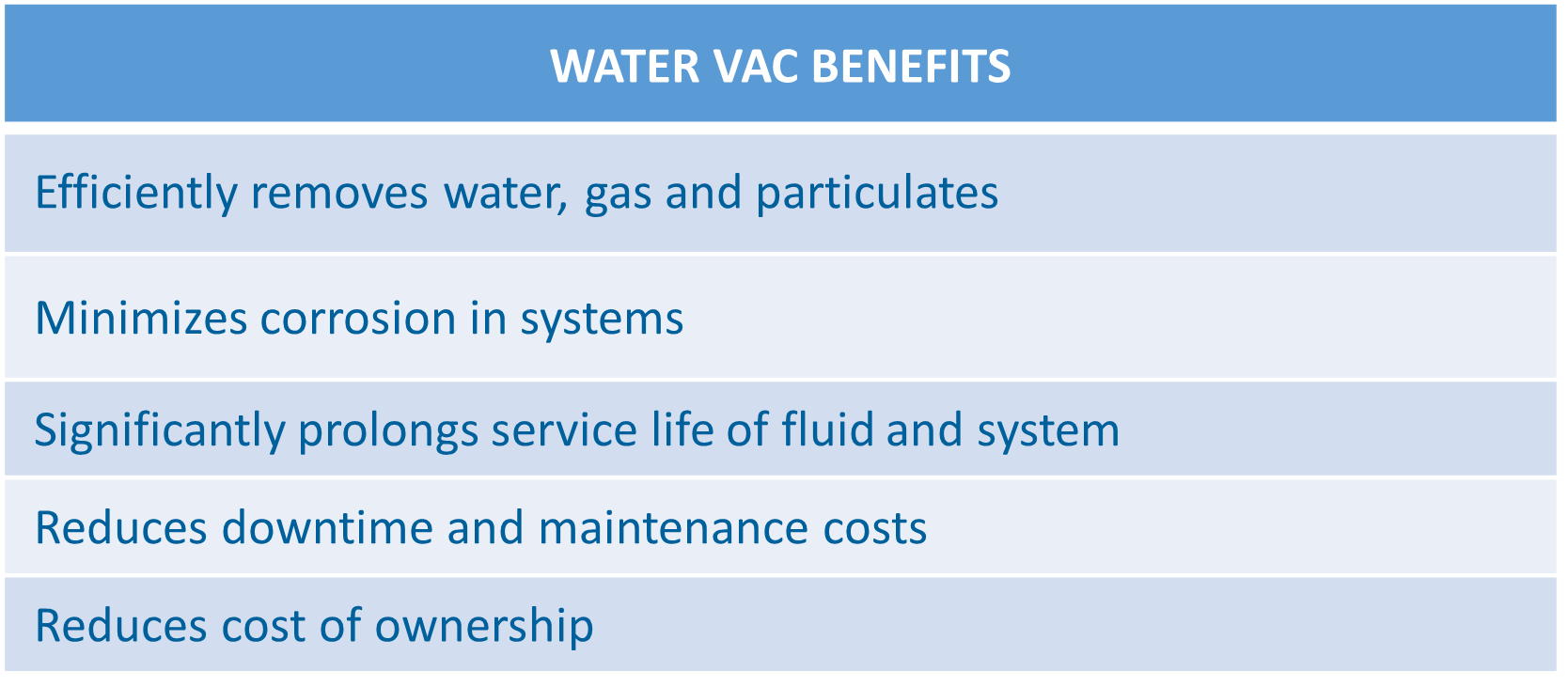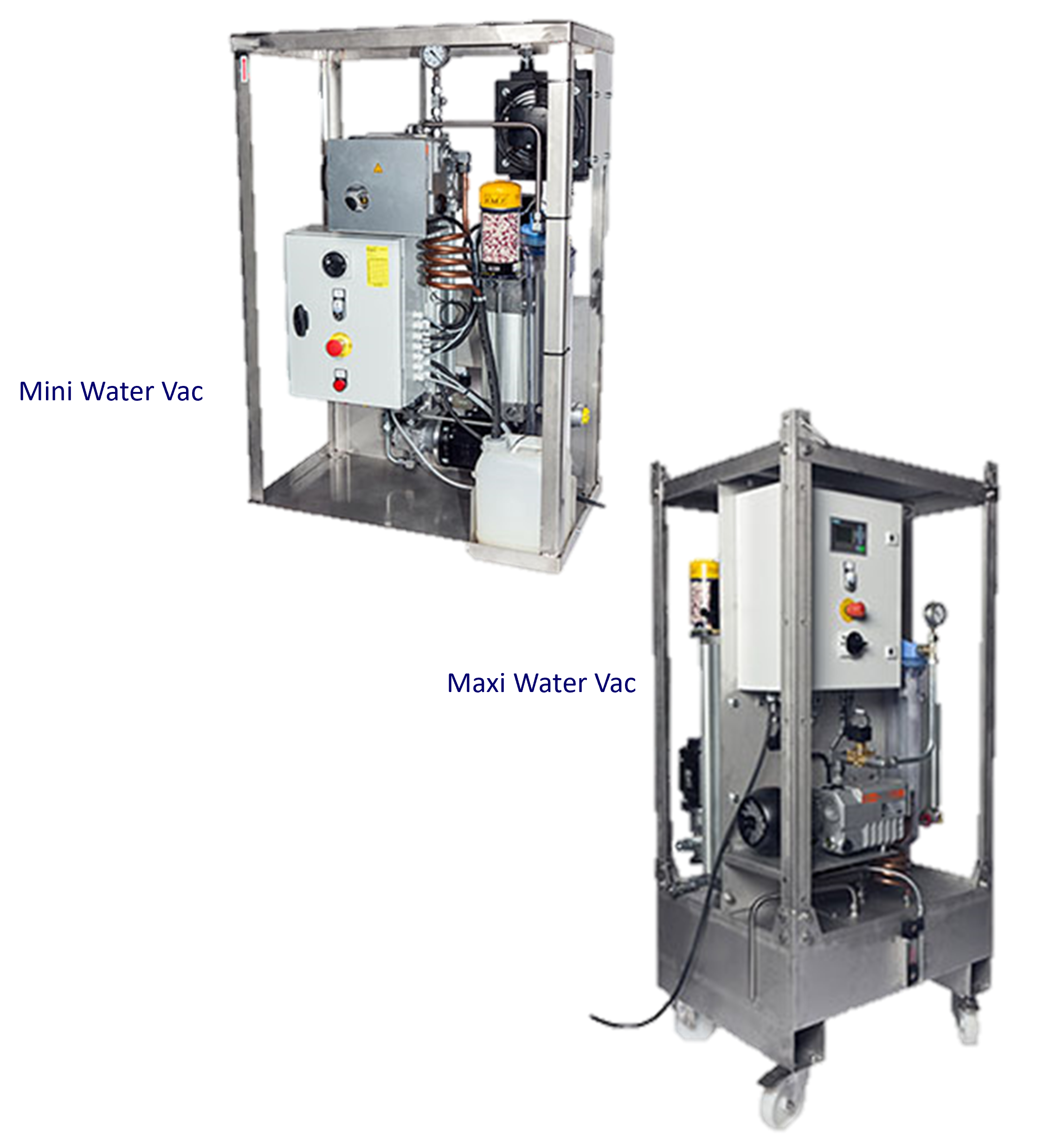Vacuum Dehydration
Keeping lubricants clean is crucial to prevent problems like oxidation and corrosion. Vacuum dehydration systems efficiently remove water and contaminants from fluids, ensuring optimal performance. Controlling the entry of water is essential to prevent contamination, but limiting its ingress is challenging in practical terms. This is especially true in environments where water is utilized in manufacturing or cleaning processes, or in operating conditions with prevalent moisture and humidity.
What is a vacuum dehydration unit?
A vacuum dehydration unit is in short a designated oil purification unit. A specialized off-line filtration unit, designed to remove moisture from hydraulic fluids. It employs a vacuum process to create conditions that facilitate the extraction of water and other contaminants from the oil. This is particularly crucial because water can degrade the performance of hydraulic systems, leading to issues such as corrosion, reduced lubricity, and compromised efficiency.
How it works
The vacuum dehydration unit typically consists of a chamber where the hydraulic fluid is exposed to a vacuum, causing the water and volatile contaminants to vaporize. The vapor is then condensed and separated, leaving behind clean and dehydrated hydraulic oil. This process helps maintain the quality of the lubricating oil, contributing to the overall health and efficiency of hydraulic systems in various industrial applications.

Vacuum Dehydration Units
The Vacuum Dehydration Units neither remove nor alter oil additives. The water removal process is based on pure vacuum evaporation inside a vacuum chamber at a maximum temperature of 60 °C. The dehydration units do not require continuous attention whilst operating. Once the dehydration units are connected properly and commissioned, oil purification is a semi-automatic process. The desired oil temperature can be selected on a thermostat which is included in the integrated heater element of the dehydration units. Oil supply and removal from the vacuum chamber is a full automatic process which is controlled by a PLC. Overflow of the waste container or tank is protected through a float switch which will shut down the dehydration unit once the maximum level is reached. The only manual action is the emptying of the pre-condenser and waste water container (depending on model).



